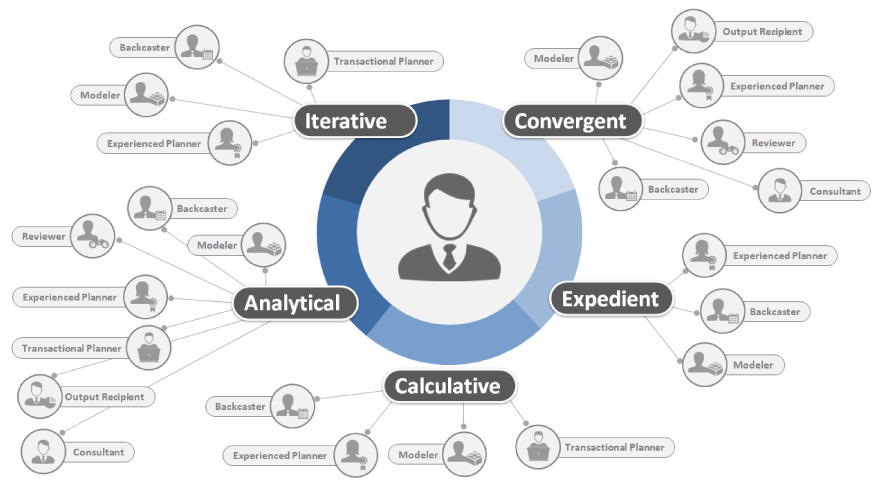Understanding human behavior has been of crucial importance to developmental, organizational and social psychologists to share important insights while we live and work with humans in different social contexts. However behavioral analysis has recently forayed as an advancement into business analytics revealing pertinent business insights regarding consumers and users.
Amidst the growing amounts of raw event data being generated in the digital world, we explore what user behavior data could be of value, to mine and reap.
Hari Nallan & Mohita Jaiswal - March 2020 - Updated January 2023

Human behavior flows from three main sources: desire, emotion, and knowledge. – Plato
Netflix launched an original series called Orange is The New Black in 2013. The show received instant popularity not due to mere chance but due to the analysis of Netflix’s viewer data that revealed coveted viewership trends. It was found* that a large percentage of Netflix viewers were intrigued by dark comedies, stories about prison and crime and appreciated a female lead character as a protagonist. All the things which made the perfect recipe for Netflix to gain double the viewership as from its last two original shows.
Leveraging user behavior data, (data that is generated by, or in response to, a customer’s engagement with a business), Netflix was able to differentiate itself through the personalization of data that it offered.
Yet of the 700 million websites that exist, 72% fail to consistently engage users or drive conversions. Of the 1.6 million apps available, just 200 account for 70% of all usage**. Year by year statistics indicate recurrent failures in creating meaning from the mass of growing data which is available to be converted into business insights.
*Source: Big Data and You, Mindy Mozer
How could behavioral data catalyze the building of unique user experiences?
1. Capture data on what people do to find out who they really are
Primarily demographic and firmographic traits such as age, gender, income, ethnicity, occupation, industry, company size, geographic location, etc. have been traditionally used to predict user behavior. Now digital data of various user actions as page views, email sign-ups, engagement metrics is available across various data sources like websites, mobile apps, call centers, help desks, billing systems and CRM systems.
Observing where people visit online—their online habits and social patterns—can give us a view of their world. This opens up one’s access to capture what the consumers do, revealing quantitative insights that can paint a much more accurate picture of what their wants and needs are, further revealing how and when to best deliver it to them.
2. Look out for the deviators in the crowd of data
Distinguishing archetypes helps categorize people into larger groups. The value of this science, however, can be best found in situations where a person deviates from their archetypical norm. When discovering divergence in data from typical decision making patterns, implementing appropriate nudges and other motivators to positively impact consumer behavior can bring them back into the experience.
Understanding common cognitive biases like feeling of loss if not acting immediately (Loss aversion Bias), getting influenced by others (Bandwagon Effect), assuming information (Availability Heuristic) can give more clarity to identify and nudge these data outliers.

3. Use a timeline of events as data rather than isolated data points to analyze behavior
An e-commerce platform shared getting traffic due to a search query on thai food. The same platform had clicks on their Asian food page but had customers leaving the page without placing orders. These 2 events when seen separately look as disparate data, however, if looked at together, reveal an insight that the Asian food page did not display thai food prominently enough, leading to a loss in orders.
Data becomes more valuable as it is collected and interpreted over longer periods of time. As patterns slowly change as time passes, by quantifying their activity and progression from this perspective, we begin to gather a story and a more in-depth picture of their life. Capture behavior data by tying users to the events they trigger to produce a map of their actions – their customer journey which can help reveal important insights on their motivations and problems.

4. Invest in behavioral segmenting and analysis to understand not only what users do, but why
Knowing about online habits and usability is not enough. Not only what one does but understanding why one does it can give us cues into users’ likely thought patterns and motivations, garnering behavioral actions ahead. Interpreting that data can give us a glimpse into their lives. Knowing the number of users clicking on something isn’t valuable until you can segment out the types of users initiating the click into meaningful sets.
The segmentation helps to build out key KPIs and metrics, create custom calculations, and identify behavioral trends. Breaking users into smaller groups can help gain a more focused understanding of their /behavior. Further with analytic data of A/B tests and usability tests, we can also make a much more rational decision which is based on the real data.
5. Utilize the potential of dashboards and report valuable KPIs
When behavioral data converts to business intelligence
People are not what they say who they are – “I am Vernessa a 29 year old working professional” but are actually what they do and engage with – “Vernessa has an active interest in learning about data science, and as she watches a lot of comic shows she is someone who values and appreciates comedy.”




